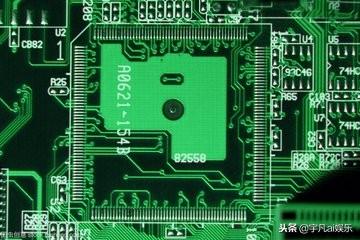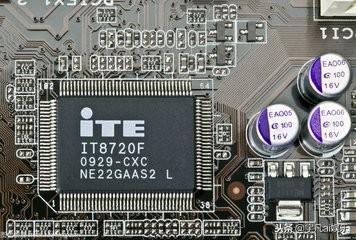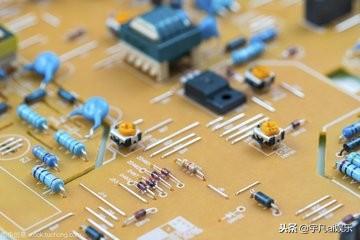
Date:2018-11-29 Categories:Industry News Hits:554
Since the early 20th century (1903), German Hanson put forward the concept of "printed circuit", the development of printed circuit has a history of more than 100 years. Although Hansen didn't make "printed circuit" in the real sense at that time, he did make conductor array arranged according to certain geometry on insulating substrate to meet the needs of telephone exchange. Since then, Edison, berry, Max schoop, Charles Ducas and others have invented a variety of printed circuit processing methods, and put forward the basic concept of circuit graphics transfer. Before the Second World War, the printed circuit technology had a breakthrough development. The Austrian Paul Eisler made the printed circuit by etching method and successfully applied it to the high reliable weapon near explosion fuze of the allies, which played an important role. After the Second World War, the technology of printed circuit has developed rapidly. In 1947, the American Aviation Commission and the National Bureau of standards initiated a seminar on printed circuit. The previous manufacturing methods of printed circuit were classified into six categories: metal paste coating method, spraying method, vacuum deposition method, chemical deposition method, molding method and powder coating method, However, these methods failed to achieve large-scale industrial production.

Until the early 1950s, because the problems of bonding strength and solder resistance of copper foil and laminate were solved, the performance was stable and reliable, and the large-scale industrial production was realized. In the beginning, single-sided printed boards were produced. In the 1960s, large-scale production of double-sided printed boards with plated holes was realized. In the 1970s, multilayer printed boards got rapid development, and developed to high-precision, high-density, thin wire, small aperture, high reliability, low-cost, automatic and continuous production. In the 1980s, surface mount printed board (SMB) gradually replaced plug-in (THT) printed board and became the mainstream of production. Since the 1990s, surface mount technology has developed from quad flat package (QFP) to ball grid array package (BGA). High density BGA PCB has been developed rapidly. At the same time, chip level packaging (CSP) PCB and multi chip module packaging technology (mcm-l) PCB Based on organic laminate materials are also developing rapidly.
The new generation of printed circuit board (PCB) is a kind of high density thin multilayer board with buried hole, blind hole, aperture less than 0.15mm, wire width and spacing less than 0.1mm, which is represented by surface laminate circuit (SLC) developed by IBM in Japan in 1990, In addition to SLC, the more famous ones are ALIVH method of Nikki Matsushita electronic parts, B-it method of Dongzhi company, cllavis method of CMK company, etc
In 1994, HTRI was founded in the United States of America, and an evaluation report was published in 1997, which formally proposed UHD high density interconnection. The characteristics of HDI printed board are micro through holes, the aperture is less than or equal to 0.15mm, and most of them are blind and buried holes; the width of the hole ring is less than or equal to 0.25mm; the width and spacing of the holes are less than or equal to 0.075mm; the width and spacing of the holes are less than or equal to 0.075mm; The contact density is 130 points in, and the wiring density is greater than or equal to 117 lines / in.

According to the actual application and the maturity of the process, American IPC classifies HDI board into six types. According to prismark, the output value of HDI / BUM in 1999 was 3.2 billion US dollars, accounting for 9% of the PCB market. In 2004, the output value of HDI / BUM reached 12.26 billion US dollars, accounting for 22.5% of the PCB market. The annual growth rate of HDI / bum is more than 30%. It has been widely used in mobile communication equipment, audio-visual electronic products and other miniaturized and multifunctional electronic products.
In China, the development of single-sided printed circuit board began in the mid-1950s. In 1956, Wang Tiezhong and others first developed the first printed circuit board, which was used in semiconductor radio. In the mid-1960s, China independently developed the mass production of copper clad laminate substrate, which made copper foil etching the leading process of PCB production in China. In the 1960s, it has been able to produce single panel in large quantity and double-sided panel in small batch. At the end of 1960s, China's "dongfanghong-1" satellite system has successfully used a large number of double-sided printed boards with metallized holes, and a few units have begun to develop multilayer boards. In the 1970s, the process of pattern electroplating etching was popularized in China. However, due to the limitation of the conditions at that time, the development and commercialization of special materials and equipment for printed circuit did not make rapid progress, and the whole production technology level fell behind the advanced level of foreign countries. In the 1980s, due to the reform and opening up, not only introduced a large number of PCB production lines with foreign advanced level at that time, but also rapidly improved the production technology level of China's PCB after learning, digesting and absorbing. In the mid-1990s, printed circuit board manufacturers from Hong Kong and Taiwan, Japan and Australia came to the mainland of China to set up joint ventures or wholly-owned factories, which led to a sharp increase in the production of printed circuit boards in China. According to the statistics of the world electronic circuit Council (WECC), the output value of China's printed circuit board reached 12.1 billion US dollars in 2006, surpassing Japan as the world's largest producer of printed circuit boards. Most enterprises in the whole industry have passed the ISO 9000 quality system certification. In terms of production technology, due to the introduction of foreign advanced production equipment and advanced production technology, including advanced production management, the gap with foreign advanced level has been greatly shortened and great progress has been made.

At present, China is in the stage of mass production of surface mount printed circuit board (SMB) mainly composed of QFP and BGA, and is developing towards the mass production of Multilayer PCB and rigid Flex PCB for chip level packaging. It is mainly used in high-tech products such as automotive electronics, 3G mobile phone, communication, computer, aviation and aerospace electronic products.
In recent years, many printed circuit board enterprises have been able to achieve the wire width of 0.075 ~ 0.125mm. In the process of making multi-layer boards, the wet film of screen printing has been replaced by the dry film, and the process of roller coating liquid photosensitive adhesive is used. The inner layer board with line width and spacing of 0.1mm can be successfully produced. After the whole process of optical imaging, it is connected to acid etching and stripping film, Up to the process of horizontal black oxidation line, the automatic production of thin wire inner laminate is realized. The aperture can be less than or equal to 0.20 mm, and laser drilling technology has been used to produce thin multilayer printed boards with buried holes and blind holes, and high-density interconnection printed boards (HDI boards) have been manufactured.

Although China has been a big country in PCB production, it is not a strong country in PCB technology. There is still a big gap between China and the world advanced level in technology. The printed circuit board produced in our country is basically a large number of medium and low-grade products. The rigid Flex PCB, HDI board, chip carrier board and high performance substrate for 3G mobile phones with high technology content still need to be imported in large quantities. The current situation of China's printed circuit board industry is lack of research and development strength, new technology and new equipment obtained by import and purchase, and lack of its own innovative technology. Strengthening the research and mass production of high-end printed circuit board and its substrate, and striving to innovate and develop independent high-end printed circuit board and its production equipment are the common efforts and struggle direction of China's printed circuit industry. We should not only be a big producer of printed circuit boards, but also a powerful country of printed circuit boards.
It is the high integration of electronic components and the high density and miniaturization of assembly technology that promote the progress of printed circuit board technology. Looking forward to the 21st century, the new printed circuit technology will focus on the multilayer printed circuit board (bum) for chip level packaging (CSP, MCM), surface mounting printed circuit board (PCB) and high density interconnection printed board (HDI) for BGA, CSP and other packaging devices, as well as the board making direction to meet the needs of all kinds of high-speed and microwave circuits. With this work, China is still in its infancy, and needs to invest in development, research and mass production, so as to catch up with the world's advanced level as soon as possible.
